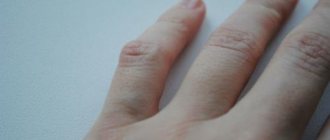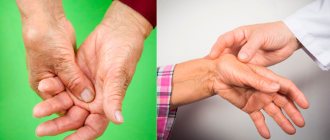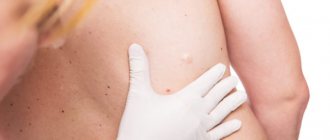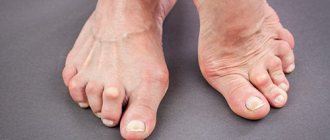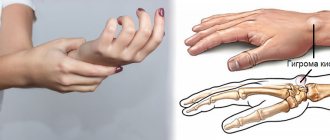Hygroma often looks like a lump and is cystic in nature. Despite the fact that it is a benign formation, such a subcutaneous tumor almost never disappears on its own. In very rare cases, if hygroma is the result of certain stresses, you can get rid of it by eliminating the stress. But, alas, this method is not a panacea. And, most likely, the lump will appear again. Drug and physiotherapeutic treatment can be effective only in the early stages. But, often, this disease becomes noticeable only after a certain time. Based on this, the best way is to remove the hygroma on the finger by a doctor.
Hygroma on the finger - what is it?
In past years, such a cyst was called a tendon ganglion, but in modern medical literature the term “hygroma” is more common.
The tumor grows from the tendon sheath of the finger and gives it a forced position. Most often, such a neoplasm is localized in the area of the wrist joint. If it appears on the fingers, then its favorite place of localization is their palmar side at the level of the metacarpophalangeal joint. A hard and slightly painful lump appears in this area. Since the hygroma puts pressure on the tendon, its normal sliding in the vaginal area is disrupted.
Hygroma on the fingers causes significant inconvenience to a person, since as it grows and develops, it forces him to keep his finger in a bent state.
Disease prevention
- Taking care of your limbs - avoiding overexertion and injury;
- Uniform distribution of the load on the hands and elastic bandaging when performing physical work;
- Treatment of concomitant and chronic diseases - bursitis, arthrosis;
- Avoiding rubbing calluses;
- Do not delay treatment of pathology if it appears;
- Balanced diet and access to vitamins;
- Periodic medical examination, especially if there is joint disease.
Causes
Since hygroma is a tumor growing from tendon sheaths or joint capsules, such a tumor can form on any part of the body where there is connective tissue. Until now, the exact reasons leading to the development of hygroma have not been established.
It is generally accepted that this neoplasm is a consequence of the influence of a number of factors on the body, including:
- Previous injuries. After a single injury to a joint or tendon, the probability of developing a hygroma is 30%.
- Hereditary predisposition. Hygromas occur more often in blood relatives.
- Being female. It has been established that the tumor appears three times more often in the fairer sex. The average age of diagnosis of the disease is 20-30 years.
- Features of the profession. At risk for developing finger hygroma are machinists, programmers, pianists, massage therapists, seamstresses, laundresses and other people whose work involves manual labor.
- Previous operations on tendons and joints.
- Bursitis and tendovaginitis.
Determining the cause that led to the formation of hygroma and its elimination will minimize the risk of reappearance of the tumor after its removal.
Clinical picture
The tumor hurts when pressed
Hygromas in a child are easily recognized by the signs that this disease has. You need to understand that the progression period can take from a couple of months to several years. During this time, the symptoms of the pathology will gradually increase, which will enable parents and the doctor to suspect a tumor in the child’s joint area.
As the hygroma develops, the child begins to complain of pain at the site of the lesion. You can also notice a seal on his body that can be easily felt.
In the initial stages of the disease, the patient is not bothered by pain. It does not occur even during palpation of the tumor. The following changes appear as it grows:
- Increase in the size of the hygroma up to 6 cm in diameter.
- The appearance of dull pain, which can move to neighboring areas.
- Thickening of the skin that is located above the cyst.
- Difficulty moving the affected joint.
Clinical symptoms of the disease appear in the patient depending on the location of the benign neoplasm. A child may be bothered by the following signs of illness:
- On the foot. The tumor grows in the area of the phalangeal bones or ankle. For this reason, the patient has difficulty moving, as he experiences severe discomfort because of it. Due to the proximity of the cyst to the nerve endings, an exacerbation of the pain syndrome may occur. If the foot is constantly overloaded and injured, this will ultimately lead to inflammation and active progression of the pathology.
- Near the knee joint. The pathology is accompanied by the development of a compaction that has a spherical shape. It can be seen directly on the kneecap. The child does not notice the growth of the tumor. Discomfort is felt only during a blow to the knee or intense physical activity on the lower limbs.
- Near the popliteal fossa. The tumor in this case is characterized by a slight displacement from above the popliteal fossa. The cyst progresses rapidly, which is why the child begins to experience pain at the site of the lesion, numbness in the leg and cramps.
Similar symptoms are observed with hygroma on the upper extremities.
Symptoms of hygroma on the finger
On the back of the fingers, hygromas most often form at the base of the distal phalanx or at the base of the interphalangeal joint. The skin over the tumor stretches and becomes thin. The lipoma itself is a round and dense neoplasm, which most often does not hurt. Discomfort can only occur if the tumor has been injured, for example, after receiving a bruise.
If a hygroma forms on the fingers from the palm side, then it originates from the flexor tendon sheath. Such hygromas reach large sizes and can occupy an area of 1-2 phalanges. The tumor will continue to grow, increasing pressure on the tissues of the finger and on its nerve endings. Therefore, such hygromas are very painful and cause severe discomfort to a person, disrupting the functions of his limb.
The person feels that the tendon seems to be “stuck” when faced with an obstacle. After some application of force, it jumps further. At this time, you can hear a characteristic click.
Fluctuation of hygromas of the fingers is detected more often than with hygromas of other localizations. As a result of injury, the hygroma may open. In this case, its contents will be released through the existing hole for a long time. It is represented by a whitish-yellow liquid, which has a fairly thick consistency. If an infection gets into the wound, signs of inflammation will appear: the skin over the hygroma swells, turns red, and the local body temperature rises.
As a rule, hygromas grow slowly, the average diameter of the tumor on the fingers is 1-2 cm, but sometimes they reach 6 cm or more.
If the hygroma is damaged
In some cases, hygroma may go away on its own. This happens quite rarely, and despite advertising, medications have little effect on this likelihood, but it can happen if you damage the lining of the cyst so that fluid leaks out of it. This is not recommended: it causes pain and often causes relapses, and can also cause injury to healthy tissue. In addition, damage to the hygroma is a recipe for complications, such as the penetration of infection into the capsule (if it is punctured or otherwise opened from the outside) or the contents of the cyst are pushed into the joint.
Diagnostics
To determine the diagnosis, you need to go to see a doctor. You need to contact a surgeon. The standard test that allows you to identify hygroma is ultrasound. This method provides information about the size, consistency and exact location of the tumor.
To exclude osteoarticular pathology, the patient is sent for radiography.
If there is a suspicion of a nodular tumor, the person is recommended to undergo an MRI. This is a highly informative method that allows you to determine the structure of the hygroma wall, as well as its filling. However, MRI is rarely used due to its high cost.
Hygroma puncture is performed when the doctor has doubts about the benign nature of the tumor. The collected fluid is sent for histological examination. In addition, a puncture can be prescribed not only for diagnostic, but also for therapeutic purposes. As an independent method of treating hygroma, it is not effective, since after its implementation the tumor will again fill with fluid. However, if a person has contraindications to the operation, and the hygroma causes him severe pain, then the puncture allows him to feel better for a while.
It is important to distinguish finger hygroma from diseases such as:
- Atheroma.
- Lipoma.
- Malignant neoplasm.
- Bone and cartilaginous growths.
- Artery aneurysms.
- Epithelial traumatic cysts, etc.
As a rule, diagnosing hygroma is not difficult and the doctor makes a preliminary diagnosis during the first examination of the patient.
Operation
Indications for testing
Surgical intervention is performed either if the patient wishes (the hygroma causes him discomfort, physical or aesthetic) or if there are indications that directly recommend it:
- the neoplasm is painful, localized in such a way that it impairs mobility;
- the cyst interferes with a person’s professional activity;
- hygroma quickly grows or multiplies (there can be several synovial cysts on one finger at the same time);
- regardless of the measures taken, the tumor does not decrease;
- due to hygroma, neighboring tissues swell, are compressed, pain, numbness of the fingers or secondary aseptic inflammation occurs;
- an infection has penetrated the tissue, causing a purulent inflammatory process;
- the cyst has a risk of rupture due to location features, individual characteristics of the patient or the hygroma itself.
How is it carried out?
If there are such indications, the doctor is obliged to directly recommend surgical intervention. There is no need to be afraid of it: this is an easy operation that does not require opening the joint capsule. It is performed under local anesthesia, and the skin at the site of the cyst is excised, after which the tumor is carefully excised. Sutures are applied, and as part of the recovery, the patient must limit his mobility for some time.
Other methods
Sometimes another method is possible, which, in essence, is a puncture: a needle is inserted under the skin, which pierces the hygroma and pumps out all the liquid from it. The second needle burns out the shell at this time. When carrying out manipulation, the doctor must be careful: if you leave part of the cyst under the skin, it will not disappear, and an incomplete operation leads to an increased risk of complications. The laser method is also used, in which the cyst is burned out using a laser. It is even less invasive and is considered modern and progressive, but is often more expensive than other types of surgery.
Complications
Although hygroma does not degenerate into a malignant tumor, this does not mean that it does not pose a danger to human health.
Possible complications of a finger tumor include:
- Spontaneous opening of a hygroma during injury. In this case, the risk of infection of the wound and adjacent tissues increases.
- Deterioration in the sensitivity of the affected finger due to the pressure of the hygroma on the nerve fibers.
- The appearance of severe shooting pains in the fingers, which resemble the clinic of neuralgia.
- Deterioration of the blood supply to the finger above the area where the hygroma is located. This will lead to thinning of the skin, destruction of the nail plate, and the appearance of pustular wounds.
The larger the size of the hygroma, the higher the likelihood of developing complications. Therefore, it is necessary to start treatment in the early stages of tumor formation.
How dangerous is the disease?
Hygroma itself is harmless. However, if it is injured or improperly treated, various complications and the development of a local inflammatory process are possible. Among the likely consequences of ganglion:
- Spontaneous opening of the cyst and leakage of serous fluid into adjacent soft tissues or out;
- Pressing the tumor contents into the joint cavity;
- Metastasis and formation of multiple factions of the ganglion;
- Inflammation and suppuration at the location of the cyst - tenosynovitis, etc.
If you handle the tumor carelessly and neglectfully, the risk of infection is quite high. Therefore, when doing a manicure or working in the kitchen, you should eliminate the possibility of accidentally injuring the cyst and introducing infection into its cavity.
Treatment of hygroma on the fingers
In past years, they tried to get rid of hygroma using such methods as:
- Kneading and crushing. In this case, the internal contents of the cyst were forcibly distributed throughout the joint. This procedure is accompanied by severe pain. The method was found to be ineffective, since relapse of the disease is observed in 100% of cases. The fact is that the entire tumor shell remains inside and continues to produce fluid. In addition, there is a possibility of new cysts appearing due to the injury.
- Hygroma puncture. This method provides only temporary relief. After a few months, the tumor will fill up again.
- Puncture using enzymes or sclerosing agents. As practice shows, relapses after such treatment occur in approximately 80% of cases. In this case, there is a high risk of the drug getting into healthy tissue, which can lead to dysfunction of joints or tendons.
- Physiotherapeutic treatment methods are not intended to reduce the size of the hygroma, but to relieve the inflammatory reaction that can develop due to tumor compression of surrounding tissues. Such treatment methods include: tissue heating, ultrasound treatment, magnetic therapy, electrophoresis, paraffin therapy, salt and soda baths. Recently, such methods of influence have been abandoned, since increased blood supply to the hygroma leads to the fact that it increases in size and grows faster.
- Conservative treatment methods using medications can be used to eliminate aseptic, that is, non-purulent inflammation. For this purpose, drugs from the NSAID group (Nimesil, Diclofenac) are used to reduce pain and the intensity of the inflammatory reaction. Antihistamines, such as Clemastine, are used to relieve swelling.
- Antibiotics for hygroma infection are used only in a complex treatment regimen, along with surgical intervention.
As practice has shown, all these methods of treating hygroma are ineffective. In order to get rid of the tumor and minimize the likelihood of its recurrence, surgical intervention is necessary.
Treatment.
If the synovial cyst is small and does not cause significant inconvenience, then the doctor suggests not disturbing the tumor - they often disappear on their own, leaving no complications behind. However, if the situation is more serious, then conservative treatment or surgical intervention is prescribed - it all depends on the clinical picture. Basically, during treatment, the contents are pumped out and a bandage is applied. In some cases, a substance is injected into the hygroma to prevent its further growth. It is worth noting that the success rate of this procedure is about 50%; if it is performed incorrectly, violations occur, including in the joint cavity. The conservative method usually involves massage, diet, taking vitamin complexes, and antiviral therapy. If the condition is neglected, the specialist recommends resorting to a radical method - removal through surgery. In this case, only those types of ganglia and hygromas that have not disappeared on their own and are not amenable to conservative treatment methods are subject to surgery.
For accurate diagnosis and effective treatment of hygroma and other diseases of the hand and joints, contact our clinic!
Our specialists are always ready to help you!
Surgery to remove hygroma on fingers
Hygroma removal surgery is prescribed for the following indications:
- Restricted mobility in the fingers.
- Pain during movement and at rest.
- A cosmetic defect that is a tumor.
- Rapid growth of hygroma.
Surgery does not require hospitalization of the patient. The average time it takes is 30 minutes. The patient is given local anesthesia, after which the tissue over the tumor is dissected and its shell and contents are removed. Preliminary opening of the hygroma is not required. The incision site is then sutured and covered with a sterile bandage. The limb itself is fixed with a plaster splint. Immobilization is a prerequisite for removing hygroma on the fingers. After 7-10 days, the sutures are removed.
A modern method of removing hygroma is its excision with a laser. During the procedure, the vessels will be instantly cauterized, which will prevent the development of bleeding. In addition, exposure to high temperatures minimizes the risk of wound infection. The procedure is carried out quickly. If the hygroma is small in size, it can be removed in 15-20 minutes.
Symptoms
The tendon ganglion on the finger looks like a dense growth with a smooth surface and a spherical shape. The leg of the capsule is attached to the surrounding tissues, due to which the hygroma is firmly fixed in one place. In addition, the lump may come into contact with the bone structure of the skeleton. When palpated under the skin, rice bodies with high mobility and pronounced fluctuation - a watery composition can be felt, which is explained by the type of contents of the capsule (synovial fluid).
As a rule, pressing on the subcutaneous growth does not cause pain, but in some cases the patient feels discomfort and pain, which is an alarming signal that the disease has entered a chronic stage. The tumor gradually grows, which is accompanied by the appearance of the following symptoms:
- presence of nagging pain when pressing;
- manifestation of a rounded growth with a diameter of up to 5 cm;
- redness of tissue during the inflammatory process;
- thickening, roughness of the skin over the capsule;
- the tumor has a soft, smooth surface and dense consistency.


